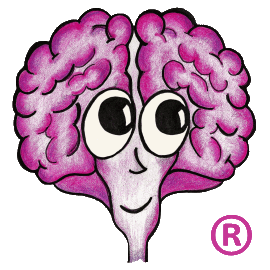Tentative TechDoc 11.1 System Requirements
To run TechDoc 11.1 on a server, here's what it takes:
- Processor: Intel or AMD x86-64 64-bit processor (Itanium is NOT supported); Multi-processor and/or multi-core highly recommended
- RAM: 4 GB Minimum; consider more if database is local
- Hard disk space: 250 GB Recommended Minimum on 1 or more drives; Size varies greatly based on number and size of documents stored
- We recommend a minimum of 3 hard drives for performance reasons;1 for OS, 1 for application and Database, 1 for File Areas
- You need to determine the initial capacity for File Area drives. This is where the documents (scanned images, Office documents, CAD files, etc.) are stored. TechDoc does not store documents in the database. Note that TechDoc can easily be told to use additional storage that is added at a later date. The size of the File Area hard drives is completely dependent on the customer's needs. Determine the average size of a customer document times the number of documents that they wish for the system to initially handle to calculate the File Area hard drive(s) size.
- Consider RAID for Performance/Reliability
- Operating System: Windows Server 2016, Windows Server 2019, Windows Server 2022, or Windows Server 2025 (any 64-bit edition that supports IIS) running on an Azure VM, a Hyper-V VM, a VMware VM, or directly on physical hardware
- Database: SQL Server 2016, SQL Server 2017, SQL Server 2019, or SQL Server 2022 (any edition) running locally or remotely, or an Azure SQL Database running in the Azure cloud
TechDoc 11 System Requirements
To run TechDoc 11 on a server, here's what it takes:
- Processor: Intel or AMD x86-64 64-bit processor (Itanium is NOT supported); Multi-processor and/or multi-core highly recommended
- RAM: 4 GB Minimum; consider more if database is local
- Hard disk space: 250 GB Recommended Minimum on 1 or more drives; Size varies greatly based on number and size of documents stored
- We recommend a minimum of 3 hard drives for performance reasons;1 for OS, 1 for application and Database, 1 for File Areas
- You need to determine the initial capacity for File Area drives. This is where the documents (scanned images, Office documents, CAD files, etc.) are stored. TechDoc does not store documents in the database. Note that TechDoc can easily be told to use additional storage that is added at a later date. The size of the File Area hard drives is completely dependent on the customer's needs. Determine the average size of a customer document times the number of documents that they wish for the system to initially handle to calculate the File Area hard drive(s) size.
- Consider RAID for Performance/Reliability
- Operating System: Windows Server 2012 R2, Windows Server 2016, Windows Server 2019, or Windows Server 2022 (any 64-bit edition that supports IIS) running on an Azure VM, a Hyper-V VM, a VMware VM, or directly on physical hardware
- Database: SQL Server 2014, SQL Server 2016, SQL Server 2017, SQL Server 2019, or SQL Server 2022 (any edition) running locally or remotely, or an Azure SQL Database running in the Azure cloud
TechDoc 10.1 System Requirements
To run TechDoc 10.1 on a server, here's what it takes:
- Processor: Intel or AMD x86-64 64-bit processor (Itanium is NOT supported); Multi-processor and/or multi-core highly recommended
- RAM: 4 GB Minimum; consider more if database is local
- Hard disk space: 250 GB Recommended Minimum on 1 or more drives; Size varies greatly based on number and size of documents stored
- We recommend a minimum of 3 hard drives for performance reasons;1 for OS, 1 for application and Database, 1 for File Areas
- You need to determine the initial capacity for File Area drives. This is where the documents (scanned images, Office documents, CAD files, etc.) are stored. TechDoc does not store documents in the database. Note that TechDoc can easily be told to use additional storage that is added at a later date. The size of the File Area hard drives is completely dependent on the customer's needs. Determine the average size of a customer document times the number of documents that they wish for the system to initially handle to calculate the File Area hard drive(s) size.
- Consider RAID for Performance/Reliability
- Operating System: Windows Server 2012 R2, Windows Server 2016, or Windows Server 2019 (any 64-bit edition that support IIS)
- Database: SQL Server 2012, SQL Server 2014, SQL Server 2016, SQL Server 2017, or SQL Server 2019 (any edition) running locally or remotely
TechDoc 10 System Requirements
To run TechDoc 10 on a server, here's what it takes:
- Processor: Intel or AMD x86-64 64-bit processor (Itanium is NOT supported); Multi-processor and/or multi-core highly recommended
- RAM: 4 GB Minimum; consider more if database is local
- Hard disk space: 250 GB Recommended Minimum on 1 or more drives; Size varies greatly based on number and size of documents stored
- We recommend a minimum of 3 hard drives for performance reasons;1 for OS, 1 for application and Database, 1 for File Areas
- You need to determine the initial capacity for File Area drives. This is where the documents (scanned images, Office documents, CAD files, etc.) are stored. TechDoc does not store documents in the database. Note that TechDoc can easily be told to use additional storage that is added at a later date. The size of the File Area hard drives is completely dependent on the customer's needs. Determine the average size of a customer document times the number of documents that they wish for the system to initially handle to calculate the File Area hard drive(s) size.
- Consider RAID for Performance/Reliability
- Operating System: Windows Server 2012 R2, Windows Server 2016, or Windows Server 2019 (any 64-bit edition that supports IIS)
- Database: SQL Server 2012, SQL Server 2014, SQL Server 2016, SQL Server 2017, or SQL Server 2019 (any edition) running locally or remotely
